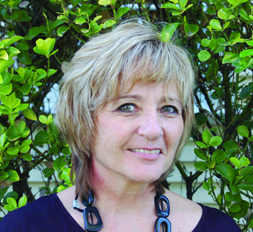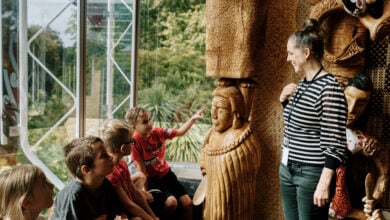Post-EQ site sharing with Shirley Boys’ High School: a host’s perspective


Post-February 22, Christchurch schools have adapted our vocabularies to reflect our new way of working.
Words such as “site sharing” (which you have to be careful of because a moment’s inattention can result in “shite-sharing”), “host/guest schools”, “early/late shifts”, “study hubs”, “student after-school care” and “new normal” feature in our everyday conversations and are an important part of our everyday life.
There are five site-sharing schools in Christchurch: Papanui and Shirley Boys’ High School, Burnside and Avonside Girls’, Cashmere and Linwood College, St Bede’s and Marian, and St Thomas’ and Cathedral College. The first mentioned in each pair is the host school.
From our perspective at Papanui, we believe logistical aspects of co-location (yet another addition to our vocabulary) have gone well. We gave Shirley our school hall and six adjoining rooms as their administrative/staff hub. For us, this meant re-locating assemblies, drama classes, the uniform shop, seating and other equipment, while our three Adult ESOL classes had to move off-site to the local primary school. School parking for Shirley has been accommodated in a site adjacent to the school. Therefore, two potentially problematic issues, parking and administration space, have not been a problem for our schools.
All host schools take the early shifts. Our staff begin school with a 7.45am briefing; students begin with Period 1 at 8am. We have a six-period day, one short break of 25 minutes at 11.05am and we finish lessons at 12.55pm. Our students leave from the north as the Shirley people enter the school from the south. Shirley lessons start at 1.15pm and finish at 5.45pm. These days, our students arrive in the dark and theirs leave in the dark.
With the new times, Papanui students are losing almost 30 minutes of tuition time a day. However, it isn’t all bad news since we are finding that both teachers and students are making the most of every lesson and generally students are taking more responsibility for their own learning out of class time. We have realised that more time in class does not necessarily equate to better time in class. There is less nonsense happening at break time, litter and referrals out of class have improved. Staff also enjoy the early finish for marking and preparation.
The negatives are the ones you would expect: not enough time at lunchtime to hold house and co-curricular activities, short practical lessons, assembly and form time slots are too short, little time in the lesson to ‘pass the time of day’, which is so important for those staff-student and staff-staff relationships. And one-on-one time for clarification or extension is difficult to manage with the second shift following so closely on the first shift’s tail.
There are special problems when the guest school is a similar size to the host school, since there are no spare classrooms for senior seminars and workshops – or indeed for meetings. Sports practices are also difficult as the gyms and fields are second-shift teaching spaces. Some childcare issues and unsettling changes in family schedules have emerged for a small minority of staff.
As Papanui High School has just emerged from a seven-year collaborative PD project with other Christchurch schools (not SBHS), one of my first thoughts when I was asked if we would site share was that the two schools would have the ideal chance to collaborate. There is some mixing between departments, but this has largely depended on pre-existing relationships between personnel. The fact that Shirley have their own work spaces set up in the hall has meant less pressure on departmental spaces but also less opportunity for idea swapping and relationship building between the schools.
Instead, a completely unintended and positive consequence is emerging and that is the way our staff and students are reacting to their new day. The staff enjoy many aspects of it and anecdotally we hear parents and students like it too. If it is seen that student outcomes will be better served and there is widespread agreement amongst our community, our school day may be quite different from the way it has always been, once SBHS returns to its own site.
How we come out of this results-wise will be interesting. Christchurch principals have asked NZQA to compare our results as a city compared to the rest of New Zealand and historically to see if there was any difference in 2010 after the disruption of the September quake. The fact that Christchurch had three premier scholars in the 2010 NZQA Awards perhaps indicates that at least the brightest weren’t affected. This year the break was less strategically damaging, but longer, and no one yet knows the effects of the ongoing shorter day. NZQA has again come up with some strategies to help quake-affected students.
How we come out of this financially is yet to be seen. The Ministry of Education promised a “no pain, no gain” deal in our early meetings when the adrenaline, good will and survivor guilt was at its height. While some aspects of the deal striking between co-locating schools will be straightforward, how will anyone be able to gauge the wear and tear on machinery and other plant? Now in week 12 of the site-sharing relationship the Ministry has at last agreed to help negotiate each deal between schools.
So “no pain, no gain” is yet another addition to our post-earthquake vocabulary. Let’s hope it too reflects our new way of doing things in Christchurch.









